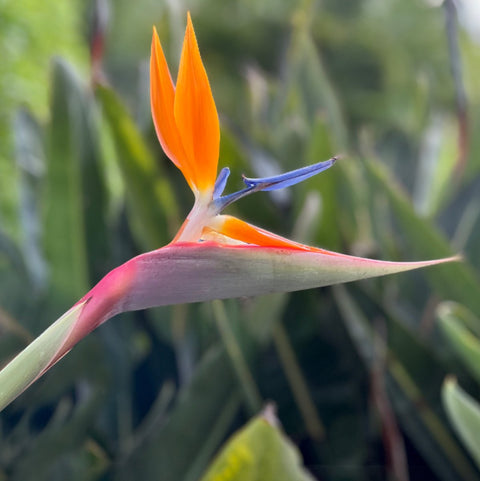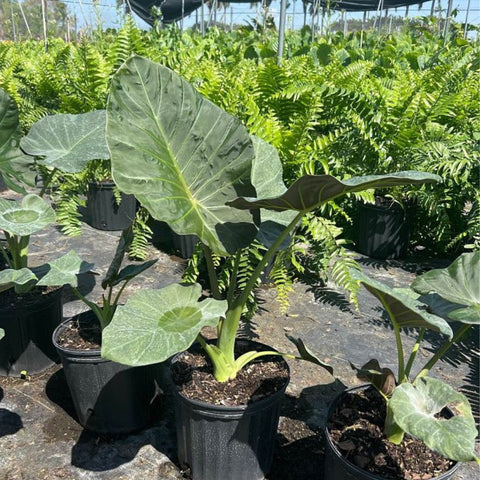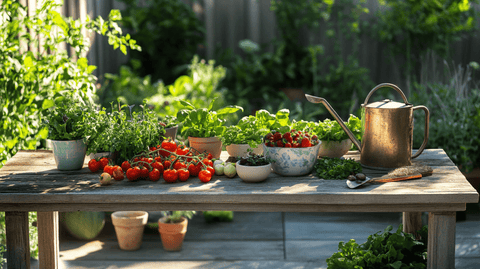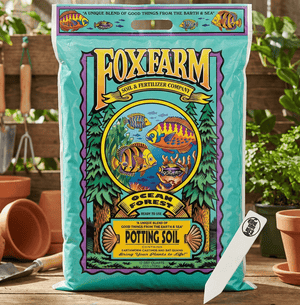Introduction
Hook: The Importance of Timing in Gardening Success
For avid gardeners and plant enthusiasts alike, understanding the essence of timing can make the difference between flourishing blooms or dismal harvests. Whether you're nurturing an urban garden or cultivating a vast landscape, the timing of planting is crucial. Nature follows its own rhythm, and aligning our gardening efforts with this rhythm through planting calendars can spell the success of our green ventures.

Brief Overview of What a Planting Calendar Is and Its Benefits
At its core, a planting calendar is a guide that provides comprehensive information on when to plant various species of plants in your specific climate and zone. It takes into account seasonal changes, first and last frost dates, and other regional climatic conditions that directly influence plant growth. The benefit of using a planting calendar is multifold—it helps in planning your planting schedule, optimizing growth conditions, and ultimately boosting yields. For both amateur gardeners and seasoned horticulturists, a planting calendar is an indispensable tool.
Introduction to the Concept of a Free Printable Planting Calendar
In today’s digital age, the convenience of a free printable planting calendar is unparalleled. Accessing tailored guidance with just a click allows gardeners to stay organized and make informed decisions without any cost barrier. At Plantology, we believe that such resources should be readily available to everyone aspiring to nurture their green thumb. Join us as we delve into everything you need to know about maximizing the use of these planting calendars.
Understanding Planting Calendars
Definition and Purpose
Explanation of a Planting Calendar
A planting calendar is a strategic gardening tool that outlines the optimal times for sowing seeds, transplanting seedlings, and harvesting crops based on regional data. It incorporates local climate patterns, ensuring that plants are nurtured in perfect sync with nature’s cycles. These calendars can range from simple charts to detailed monthly guides that cover various plant types, including vegetables, flowers, trees, and shrubs.

Importance for Gardeners of All Levels
Whether you’re a novice gardener or a seasoned professional, a planting calendar offers indispensable insights that can enhance productivity and efficiency. For beginners, it demystifies the complex world of plant seasons, guiding them through every step. Experts, on the other hand, benefit from such resources by fine-tuning their practices, aiming for prime yields and unparalleled blooms. In essence, planting calendars serve as both a teaching tool and a strategic ally for gardeners of all proficiency levels.
Types of Planting Calendars
Planting calendars come in various formats and complexities, each meeting specific needs of the gardening community. Let's explore some of the key types:
Basic Planting Charts
These provide a straightforward guide with minimal details—mainly highlighting the best planting times for each type of plant. They are perfect for beginners or casual gardeners seeking a simplified approach to their decision-making process.
Detailed Monthly Guides
These calendars take it a step further, providing month-by-month advice on planting, care, and harvesting processes. They cater to experienced gardeners who invest significant time and resources into their planting ventures and wish to synchronize their activities with the changing seasons.
Customizable Planting Calendars
With advancements in digital technology, many planting calendars now offer personalization features. These allow gardeners to input their zip code or select their planting zone, generating a calendar that caters specifically to local weather patterns and soil conditions.

Creating Your Own Planting Calendar
Understanding Your Growing Zone
The first critical step in developing a planting calendar is identifying your specific growing zone. The USDA plant hardiness zones are the most commonly referenced system in the United States, categorizing regions based on their climatic conditions. Understanding your zone helps in selecting plants that will thrive in your environment and planning the optimal planting and harvesting times.
Gathering Essential Data
Climate and Seasonal Patterns
Research the climate patterns specific to your zone. Take into account average temperatures, rainfall, and notable weather events like last frost in spring and first frost in fall. This information forms the backbone of an effective planting calendar.
Soil Conditions
Initiate a basic soil test to understand its pH and fertility levels. The soil quality will directly influence your plant choices and the types of amendments necessary to ensure successful growth.
Designing the Structure
Use a spreadsheet or a specialized calendar app to compile the data and create a custom calendar. Begin by listing the plants you wish to grow and align each plant’s optimal sowing time with your gathered data. For gardening enthusiasts who prefer a hands-on approach, consider designing a visually appealing calendar that hangs in your gardening space, offering inspiration and guidance at a glance.

Leveraging Technology for Planting Calendars
Mobile Applications
Several mobile applications are dedicated to assisting gardeners in maintaining efficient planting schedules. These apps often integrate weather forecasts, offer planting tips, and even notify you of pest control practices, enabling you to stay on top of every planting task.
Online Resources
Your gateway to online planting calendars starts with finding reputable platforms that offer free printable options. Many agricultural institutions, gardening associations, and e-commerce retailers like Plantology offer region-specific calendars that you can download, print, and use as a daily reference.
Interactive Features of Online Calendars
Modern online planting calendars often boast interactive features such as personalized recommendations based on inputted data—your region, preferred plants, and garden layout. These tools effortlessly bridge the gap between traditional gardening practices and modern conveniences.
Benefits of Using Free Printable Planting Calendars
Cost-Effective Planning
Free printable planting calendars eliminate financial barriers, offering anyone interested in home gardening access to curated and well-researched planting schedules. Instead of investing in costly planning tools or expert guidance, download these calendars directly from trusted sources, ensuring you have the information you need without the expense.

Convenience and Accessibility
The tangible nature of a printed calendar cannot be understated—it provides a tactile element to planning that digital screens cannot replicate. Pin one up in your workspace or garden shed and visualize your entire planting season at a glance, making daily gardening decisions that much more efficient.
Staying Organized and Motivated
An organized approach to planting helps in better time management and ensures resources are allocated wisely. Seeing a full year of goals and activities laid out in a visually organized format can serve as a motivational tool, propelling you to achieve better results with your gardening endeavors.
How Plantology Supports Your Gardening Journey
High-Quality Plants and Products
With a passion for gardening and sustainability, Plantology offers a range of healthy, vibrant plants that are perfect for transforming your landscape. For instance, explore our selection of exquisite palms such as the Adonidia Palm Double and the Alexander Palm. Elevate your garden's aesthetic with these stunning additions available on our platform today.
Educational Resources and Community Engagement
At Plantology, we believe in empowering our customers with knowledge and resources to nurture their gardening skills. Alongside our free printable planting calendars, our blog offers a wealth of information covering various topics from soil health to pest control. Join our community and stay updated with the latest trends and actionable gardening insights.

Seamless Shopping Experience
Our user-friendly website ensures a hassle-free shopping experience, allowing you to focus more on planning and executing your garden vision. Visit our homepage today and explore an extensive collection of Agave Blue and Aglaonema Silver Bay plants, perfect for creating a thriving indoor garden.
Conclusion
Free printable planting calendars are extremely valuable for any gardening aficionado, simplifying the complexities of timing and planning while promoting sustainable practices. By utilizing these tools and supplementing them with premium products and insightful resources from Plantology, your journey to a lush and bountiful garden awaits. Embrace the confluence of nature’s rhythm and streamlined planning, and let growth flourish.
Deep Dive into Plant Types and Planting Calendar Strategies
Vegetables: Timing and Varieties
Vegetable gardening can be a fulfilling endeavor, offering a bounty of flavors and nutrition straight from your backyard. With the help of a planting calendar, you can strategically plan your vegetable garden to maximize productivity. Let's explore some common vegetable types and how best to incorporate them into your calendar:

Leafy Greens
Leafy greens such as spinach, lettuce, and kale thrive in cooler temperatures. Early spring and fall are usually the best times to plant these vegetables. Utilizing a planting calendar, note that these greens can be interspersed between slower-growing crops, making efficient use of your garden space. For southern zones, consider planting in shaded areas during warmer months to extend the growing season.
Root Vegetables
Carrots, beets, and radishes are staples in a robust vegetable garden. A planting calendar will not only indicate the ideal planting times—typically in early spring or late summer—but also assist in staging successive plantings to ensure a continuous harvest throughout the season. Pay attention to soil readiness as root crops require well-drained soil to develop properly.
Nightshades
Tomatoes, peppers, and eggplants are warm-season crops that demand full sun and warm soil conditions. Mark your planting calendar to start seeds indoors and transplant them outdoors after the danger of frost passes. In regions with shorter growing seasons, select early maturing varieties to ensure successful yield.
Flowers: Bloom Timing and Garden Design
Incorporating flowers into a planting calendar can elevate the aesthetics and biodiversity of your garden. A well-planned flower calendar showcases sequential blooms, providing continuous color and interest. Let's delve into some categories of flowers and tips for scheduling their plantings:

Annuals
Annual flowers like marigolds, zinnias, and impatiens can brighten up any garden with their vibrant bloom throughout the growing season. Since they complete their life cycle in a single year, use a planting calendar to stagger their planting times and prolong flowering. Annuals are excellent for filling gaps between perennials or in containers, adding instant color where needed.
Perennials
Perennials offer enduring beauty, returning year after year. Consider planting them in early spring or fall, as marked on your calendar, giving them a chance to establish roots and acclimate to their environment before extreme temperatures. Incorporate a mix of early and late bloomers into your design to ensure varied and persistent interest across the seasons.
Integrating Companion Planting into Calendars
Companion planting is an age-old technique where plants are grown together for mutual benefit. This practice enhances plant health and can deter pests organically. When drafting your planting calendar, consider these synergistic pairings:
Three Sisters Method
Native American agriculturalists mastered the "Three Sisters" planting method by growing corn, beans, and squash together. This trio exemplifies harmonious planting: corn provides a structure for beans to climb, beans fix nitrogen in the soil, and squash spreads out to suppress weeds. By incorporating this into your calendar, you can take advantage of these symbiotic benefits.

Herbs and Vegetables
Integrate aromatic herbs like basil, cilantro, and dill within your vegetable calendar for dual benefits—enhancing flavor profiles and repelling harmful insects. Pairing dill with cabbage or planting basil alongside tomatoes can ameliorate your garden’s output and reduce the reliance on chemical controls.
Maximizing Greenhouse Utilization with Planting Calendars
Extending the Growing Season
Greenhouses are invaluable for extending your garden's productivity. By using a planting calendar tailored for greenhouse conditions, you can maximize your planting efforts long before outdoor conditions permit. This section outlines strategies for harnessing greenhouse potentials:
Starting Seeds Early
A greenhouse setting allows gardeners to start seedlings weeks before the last frost date. Use your planting calendar to schedule seed starting, giving your plants a head start on the growing season. Monitor temperature and humidity levels closely to ensure optimal germination and early growth.
Overwintering Perennials
In cold climates, a greenhouse provides a sanctuary for tender perennials, shielding them from harsh frosts. Plan your planting calendar to relocate vulnerable plants into the greenhouse in late fall, ensuring their survival and early revival when spring arrives.

Utilizing Indoor Controlled Environments
For those without access to traditional outdoor spaces, an indoor garden with controlled environments like hydroponics or vertical gardening systems can mimic conditions that support plant growth. Leverage these setups along with your calendar to maintain year-round productivity:
Hydroponic Systems
Hydroponics embodies the future of urban gardening, where nutrient-rich water supports plants without soil. Integrate this with your planting calendar by planning consistent sowing and harvesting cycles based on preferred plant growth rates. Consider greens like lettuce and herbs, which perform exceptionally well in these systems.
Vertical Gardens
Space-saving vertical gardens allow urban dwellers to cultivate greenery in confined places. When structuring your planting calendar, factor in the exposure and microclimates tailored by wall gardens. Consistently check for maintenance requirements such as water and nutrient delivery to ensure a lush viney expanse.
Case Studies: Success Stories Using Planting Calendars
Community Garden Initiatives
Community gardens across the globe have embraced planting calendars to organize and enhance productivity amongst numerous gardeners sharing a common space. Consider the example of "Green Thumb Collective," an urban initiative where residents utilized a communal calendar to synchronize seasonal planting efforts, leading to bountiful harvests and tightened community bonds.

Educational Schools Programs
Schools integrating gardening into their curriculum foster learning through tactile experiences with nature. By aligning with educational standards, schools can use planting calendars to introduce students to concepts like plant growth cycles and sustainable practices—resulting in hands-on learning through school gardens.
Revolutionizing Curriculum
Schools such as "Eco Kids Academy" have reported positive engagement by employing planting calendars. From measuring growth patterns to observing eco-friendly pest control methods, students become permaculturists than mere observers, cementing their role as guardians of tomorrow's environmental ethos.
Personalizing Your Planting Calendar for Best Results
Adapting to Changing Climates
Climate change alters traditional planting seasons, requiring gardeners to adapt their calendars accordingly. Stay informed with up-to-date climate data, and amend planting practices to optimize results amidst these changes:
Monitoring Seasonal Shifts
Set aside regular review sessions for your planting calendar, adjusting planting dates based on observed shifts in seasonal patterns. Be flexible and ready to alter your plans in response to unexpected weather changes, such as prolonged winters or early summers.

Utilizing Technology for Forecast Access
Leverage digital tools to gain real-time access to weather forecasts and climate updates. Incorporate these insights into your planting calendar, determining critical phases for planting, watering, and harvesting with precision and foresight.
Integrating Wildlife and Biodiversity with Your Planting Calendar
Promoting Pollinators
Integrate strategies within your planting calendar to attract and support pollinators. Plant selections like lavender, coneflowers, and sunflowers provide nectar and habitats for bees, butterflies, and hummingbirds—boosting ecological balance and enhancing yield quality.
Creating a Habitat for Beneficial Insects
Schedule plantings to include species that support predator insects like ladybugs and lacewings. Marigolds and dill invite these friendly insects while deterring pests, creating an all-natural defense strategy against common garden nuisances.
Conclusion: Crafting a Legacy Through Gardening
Your planting calendar is more than a tool; it's a gateway to a legacy of sustainable practices, home-grown produce, and stewardship over your little slice of nature. By conscientiously utilizing planting calendars, gardeners can extend their influence beyond seasonal crops—creating habitats, elevating community initiatives, and fostering connections through shared green spaces.

At Plantology, we're thrilled to accompany you throughout this fulfilling journey. Explore our wide selection of plants, educational resources, and community engagements to enhance your gardening expertise and cultivate a vibrant future.






























Comments (0)
There are no comments for this article. Be the first one to leave a message!